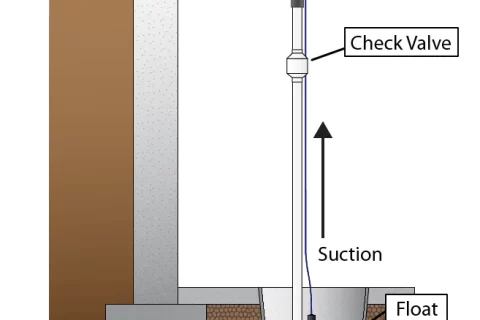Understanding the Importance of Ground Fault Circuit Interrupters
If you are a homeowner with a sump pump or considering installing one, you may have come across the term “GFCI” or Ground Fault Circuit Interrupter. But what exactly is a GFCI, and does your sump pump need one? In this comprehensive guide, we will delve into the world of sump pumps and GFCIs, understand their functionalities, and explore why it is crucial to have them work in harmony. By the end, you will be equipped with the knowledge to ensure the safety and reliability of your sump pump system.
What is a Sump Pump?
A sump pump is a crucial component of many residential basements, crawl spaces, and areas prone to water accumulation. Its primary function is to remove excess water that seeps into the space and prevent flooding. The sump pump sits inside a sump pit or basin, and when the water level reaches a certain threshold, it activates, pumping the water away from the building’s foundation and discharging it to a safe location.
Understanding Ground Fault Circuit Interrupters (GFCIs)
A Ground Fault Circuit Interrupter (GFCI) is a specialized electrical safety device designed to protect against electrical shocks. It works by continuously monitoring the flow of electricity in a circuit. If it detects any imbalance or deviation, such as current leakage to a ground source, it rapidly shuts off the power, preventing potential harm to humans and electrical equipment.
Bestselling GFCI for Sump Pumps
Why Should You Consider Using a GFCI with Your Sump Pump?
Protecting Against Electrical Shocks: Since sump pumps deal with water, there is a heightened risk of electrical shock in case of a malfunction. Water is an excellent conductor of electricity, and any leakage or exposure to live wires can be dangerous. Installing a GFCI with your sump pump significantly reduces this risk, providing an added layer of protection against electric shock.
Preventing Electrical Fires: Faulty or compromised sump pump motors can overheat and potentially lead to electrical fires. By incorporating a GFCI, you reduce the chances of electrical fires caused by ground faults, as the GFCI will cut off the power supply at the earliest sign of a problem.
Compliance with Building Codes: Many building codes and regulations mandate the use of GFCIs in areas prone to moisture, such as basements and crawl spaces. Failure to comply with these codes can lead to penalties and insurance issues in the event of a mishap.

Sump Pump and GFCI Installation
Installing a GFCI with your sump pump system can be achieved through two primary methods: using a GFCI outlet or a GFCI circuit breaker.
GFCI Outlet: A GFCI outlet is a standard outlet with built-in GFCI protection. It is relatively easy to install, and you can replace your existing outlet with a GFCI outlet rated for the appropriate amperage. However, ensure that the GFCI outlet is compatible with your sump pump’s power requirements.
GFCI Circuit Breaker: If you prefer a more centralized approach, a GFCI circuit breaker can be installed in the electrical panel. This option provides GFCI protection for the entire circuit, which means all outlets on that circuit will be safeguarded.
When installing a GFCI, it’s essential to follow the manufacturer’s guidelines and consult a licensed electrician if you’re unsure about the process.
Bestselling Sump Pumps
Common FAQs About Sump Pumps and GFCIs
1: Can I Install a Sump Pump Without a GFCI?
While you can technically install a sump pump without a GFCI, it is strongly discouraged due to the safety risks involved. As mentioned earlier, the presence of water in sump pump environments increases the likelihood of electrical hazards. Installing a GFCI is a small investment to ensure the safety of both your property and its occupants.
2: Should I Choose a GFCI Outlet or a GFCI Circuit Breaker?
Both options are effective in providing GFCI protection to your sump pump. If you want to protect only the sump pump outlet, a GFCI outlet is sufficient. However, if you want broader protection for all outlets on the circuit, a GFCI circuit breaker is the better choice.
3: Can I Use an Existing GFCI Outlet for My Sump Pump?
If you have a GFCI outlet nearby, it might be tempting to use it for your sump pump. However, it is recommended to dedicate a separate outlet to the sump pump to avoid potential circuit overloads and ensure consistent protection.
4: How Often Should I Test the GFCI?
It is crucial to test the GFCI regularly to ensure it is functioning correctly. Manufacturers often recommend testing it once a month. To test, press the “Test” button on the GFCI. The power should be cut off, and then press the “Reset” button to restore power.
Conclusion
In conclusion, a sump pump is a valuable asset to safeguard your property against water damage, and incorporating a GFCI ensures its safe and reliable operation. The GFCI’s ability to protect against electrical shocks, prevent fires, and comply with building codes makes it an indispensable addition to any sump pump system. Whether you choose a GFCI outlet or a GFCI circuit breaker, prioritize safety by having a licensed electrician handle the installation. By taking these precautions, you can enjoy peace of mind knowing your sump pump system is well-protected, and your property is safeguarded from potential electrical hazards.




